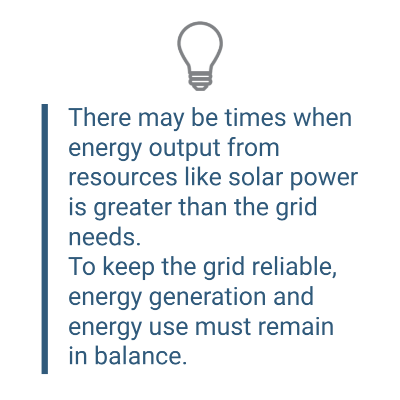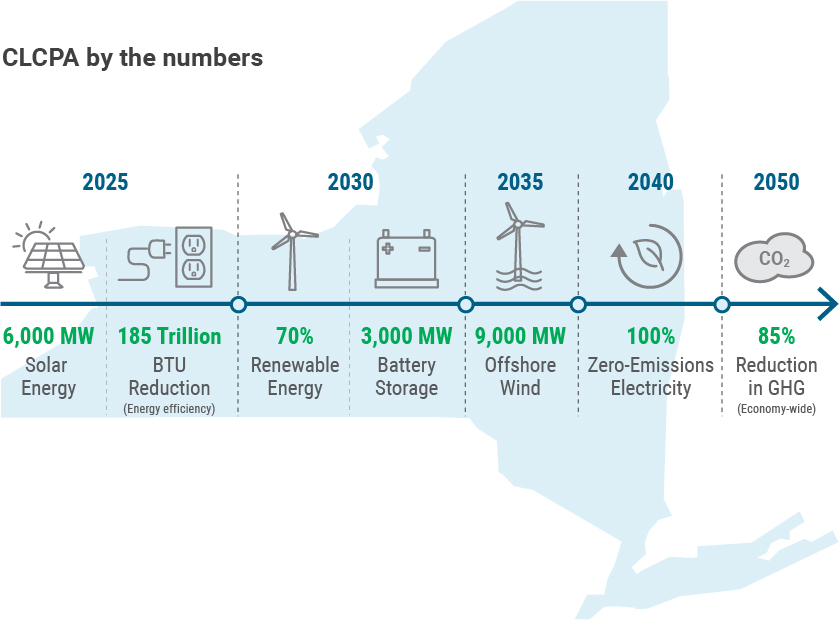How Solar on Dispatch Adds Flexibility to a Clean Energy Resource

Renewable resources offer both benefits and challenges to grid operators. Resources such as wind energy and solar power are intermittent, meaning energy production is dependent upon weather conditions.
In this sense, renewable resources lack the type of flexibility that more conventional energy sources offer to the grid; these resources are limited by weather and time of day.
As New York State continues to expand wind and solar resources, the need to coordinate their energy output increases as well. More than a decade ago, we launched a wind on economic dispatch program, which uses price signals to moderate wind output. In June, we will apply the same concept to solar, which will further help to maintain reliability.
Adding Flexibility to Solar Energy
The Climate Leadership and Community Protection Act (CLCPA) calls for 6,000 MW of solar power to be installed in New York by 2025. At the end of 2020, New York State had about 2,800 megawatts (MW) of installed behind-the-meter solar power capacity, according to the New York State Energy Research and Development Authority (NYSERDA).
The NYISO’s wholesale energy market selects the lowest-cost resources that can meet system needs when selecting suppliers. Through new market rules accepted by FERC, we will treat grid-scale solar resources as dispatchable energy resources capable of lowering energy production in response to price signals. That means if energy demand suddenly decreases, resulting in low wholesale prices, solar resources will reduce output according to their offer price. Wind, fossil fuel and most of the state’s hydropower capability already perform in this manner.

Note that these market rules only apply to grid-connected solar projects that participate in New York’s wholesale energy markets. Today, nearly all solar projects in New York are what’s called “behind-the-meter” – ostensibly connected to a single consumer or group of consumers, and built primarily to supply those consumers.
Grid-Scale Solar on the Rise
Today, there is only one grid-scale solar project in New York, a 32-megawatt (MW) facility located in eastern Long Island. However, that is changing.
Our Interconnection Queue, which contains all proposed new wholesale generation in New York, currently has a number of very large solar proposals. Included in that list are three projects in the North Country that run from 150 to 180 MW each, and one project in Central New York near Lake Ontario that totals 200 MW. Projects of this size would involve tens of thousands of individual solar panels, spread out over many acres of land.

Solar power resources may have additional options to make use of their excess power in the future. We are pursuing market rules to enable hybrid storage resources to participate in our markets. In these types of resources, developers integrate battery storage to their solar arrays, allowing excess solar energy to be stored when not needed and injected onto the grid whenever demand rises.
For more about how we are addressing a zero-emissions grid with market-based solutions, visit the 2040 Power Grid webpage.

